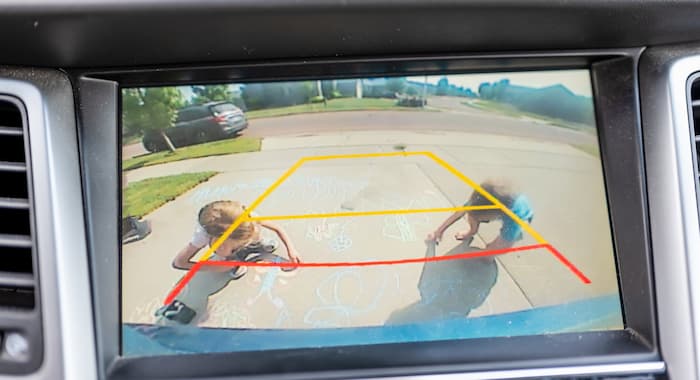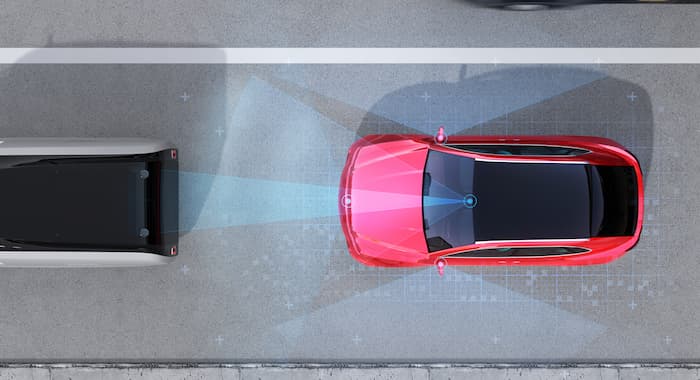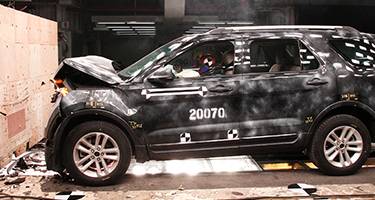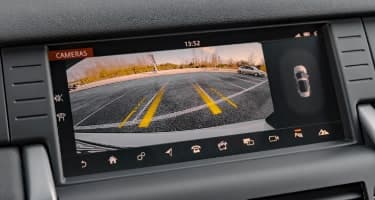Vehicles have become significantly faster and smarter over the last decade, and with these advancements has come the adoption of advanced car safety features. According to Government statistics, for the 12 months ending July 2025, road deaths have been on the rise.
The states that experienced the most fatal accidents were New South Wales with 355 (5.0% increase on previous 12 months), followed by Queensland with 299 (2.7% increase).[1]
We look at the top safety features in modern cars, including more recent developments in the auto world.
Electronic Stability Control/Program (ESC/ESP)

Electronic Stability Control/Program (ESC/ESP) is a major safety component of modern cars. It is a car safety feature that electronically detects loss of traction to a vehicle’s tyres. It also applies the brakes to prevent skidding and help the driver steer in a controlled manner.
The ESC brakes individual wheels when required and can even cut engine power until control is regained. It works by using sensors to detect whether you lose control of your car and then uses the vehicle's brakes to assist you in regaining control.
This modern car safety feature is also known as dynamic stability control or vehicle stability control.
Reverse Cameras and Rear Cross Traffic Alert

Reverse cameras aren’t just a modern safety feature - they’re also becoming a legal requirement.
Under a new standard known as the Australian Design Rule 108/00 – Reversing Technologies, all new vehicle models have until November 1 2025, to meet the new standard, while all new vehicles made from existing models have until November 1 2027.[2]
Reversing cameras give drivers the ability to see what’s happening behind their car while in reverse gear. This technology, first introduced in the 1950s by American car manufacturer Buick, helps reduce blind spots and avoid collisions, and is being pushed as a standard car safety inclusion in part due to the risk to the number of children who are involved in low-speed driveway accidents.
Similarly, Rear Cross Traffic Alert (RCTA) technology uses radar to sense objects approaching from the side when reversing. If the radar detects an approaching object, it will provide an audio and sometimes a visual alert.
Blind Spot Monitoring
Blind spot monitoring is another modern car technology that adopts sensors to alert drivers to vehicles in their blind spot. Audio and visual warnings are given in instances such as when it’s unsafe to merge between lanes, helping drivers be more aware of their surroundings and avoiding potential collisions.
Active Headlights and Automatic Wipers

Another increasingly common car safety feature originally introduced by the big German car manufacturers (Audi, Mercedes-Benz and BMW), active or adaptive headlights work to improve visibility by changing your headlights’ beam pattern based on road conditions. Regular headlights that point straight ahead are great on a straight road with street lighting, but adaptive headlights are better suited to darker roads with bends.
Then, there’s cornering headlights. There are both static and dynamic versions of cornering lights. Static cornering headlights are fixed within the headlight assembly or the front bumper, and activate when the steering wheel is turned beyond a certain angle or when a turn signal is switched on.
Dynamic cornering headlights are seen in higher-end vehicles. Rather than relying on a separate set of lights, the main headlights use sensors to sense steering input, the car’s speed, and will then adjust the lighting accordingly. This can enhance lighting and safety even further.
This automation also extends to automatic wipers. Once rain is sensed - usually by an optical sensor located behind the rear-view mirror - the windshield wipers are activated. Their speed is based on how fast moisture builds up between wipes
Autonomous Emergency Braking (AEB) and Pre-crash Warning Alerts

Similar to reversing cameras, Autonomous Emergency Braking (AEB) is now mandatory within modern vehicles. All new models introduced from March 2023 and all new vehicles sold from March 2025 must include this technology.
The AEB system scans the road to monitor the obstacles ahead. If the vehicle detects that a collision may occur, it will automatically apply the brakes to avoid contact with the obstacle.
Other pre-crash warnings include forward collision alerts. These warnings will alert the driver if a crash is imminent, allowing them to take precautionary measures.
Lane Departure Warning
Lane Departure Warning is a modern addition to cars that many vehicle manufacturers include as standard. It contributes to road safety by using forward-facing cameras to monitor road markings and will alert the driver if the vehicle unintentionally drifts out of its lane.
This can help prevent a car accident, particularly if a car is equipped with cruise control and a driver may be paying less attention to the road.
Lane Departure warning, like many other features on our list, provides a warning through visual, auditory, and/or haptic (vibration) signals to prompt the driver to steer back into the lane. The system typically disengages when the turn signal is activated, assuming an intentional lane change.
Driver Attention Warnings
With fatigue being one of the biggest contributing factors to car accidents, driver attention warnings have begun to be incorporated into modern cars. These use different technologies to detect certain actions that might suggest drowsiness, including steering wheel movements, time spent driving, and even drivers’ eye and head movements.
Child Presence Detection

In recent years, child presence detection technology has been introduced to more car models.
This safety technology uses in-vehicle sensors alongside external communication technology to detect whether or not a child has been left behind in a car. If this happens, a warning signal is triggered to get the attention of the driver. Alerts can even be sent to mobile phones.
Door Opening Warning
Door opening warning systems in modern cars are designed to enhance safety by alerting drivers and passengers to potential hazards when opening a door. This is particularly helpful in busy traffic, as the warning systems can detect approaching vehicles, cyclists and pedestrians.
Recent Australian Design Rules (ADRs)
The Australian Design Rules are national standards for vehicle safety, anti-theft, and emissions. These standards apply to new vehicles manufactured in Australia, as well as to imported new or second-hand vehicles being sold in the Australian market.
These ADRs, particularly the ADR change introduced on 1 March 2025, saw major manufacturers discontinue several long-running and popular models. This included Mitsubishi's ASX, Pajero Sport and Eclipse Cross models, which cannot be retrofitted for these new standards.
Originally based on European specifications, new ADRs reflect the nature of the Australian automotive industry.
Evolution of Car Safety and ANCAP Influence
Australasian New Car Assessment Program (ANCAP) plays an important role in assessment of vehicle safety for cars sold in Australia. ANCAP crash tests cars and conducts on-road assessments in regards to safety features and technologies.
Afterwards, they publish a star rating (out of 5) on the vehicle’s safety performance. There are quite a number of cars that have reached the five-star ANCAP safety rating.
These days, ANCAP’s testing protocols have evolved over the years to include advanced active safety features like Lane Keep Assist, Speed Assistance Systems, Driver Monitoring Systems, Child Presence Detection, and Door Opening Warning. New vehicles are often expected to have these features as standard.
Additionally, ANCAP has focused on both crash protection and crash prevention, further influencing advanced safety features from car manufacturers distributing their models in Australia.
No matter how safe your car is, it’s always good to have the right insurance
Get a quote with 15%^ off your first year’s premium for a new policy purchased online, with Budget Direct.
|






